Hyundai Tucson vs Mazda MX-30 – Which one offers the better deal?
Costs and Efficiency:
When it comes to price and running costs, the biggest differences usually appear. This is often where you see which car fits your budget better in the long run.
Hyundai Tucson has a slight advantage in terms of price – it starts at 30600 £, while the Mazda MX-30 costs 30800 £. That’s a price difference of around 214 £.
As for range, the Mazda MX-30 performs slightly better – achieving up to 85 km, about 15 km more than the Hyundai Tucson.
Engine and Performance:
Power, torque and acceleration say a lot about how a car feels on the road. This is where you see which model delivers more driving dynamics.
When it comes to engine power, the Hyundai Tucson has a evident edge – offering 252 HP compared to 170 HP. That’s roughly 82 HP more horsepower.
In acceleration from 0 to 100 km/h, the Hyundai Tucson is a bit quicker – completing the sprint in 7.90 s, while the Mazda MX-30 takes 9.10 s. That’s about 1.20 s faster.
In terms of top speed, the Hyundai Tucson performs clearly perceptible better – reaching 204 km/h, while the Mazda MX-30 tops out at 140 km/h. The difference is around 64 km/h.
Space and Everyday Use:
Whether family car or daily driver – which one offers more room, flexibility and comfort?
Both vehicles offer seating for 5 people.
In curb weight, Hyundai Tucson is a bit lighter – 1542 kg compared to 1849 kg. The difference is around 307 kg.
In terms of boot space, the Hyundai Tucson offers clearly more room – 620 L compared to 350 L. That’s a difference of about 270 L.
In maximum load capacity, the Hyundai Tucson performs evident better – up to 1799 L, which is about 644 L more than the Mazda MX-30.
When it comes to payload, Hyundai Tucson evident takes the win – 545 kg compared to 402 kg. That’s a difference of about 143 kg.
Who wins the race?
The Hyundai Tucson proves to be is largely superior and therefore becomes our DriveDuel Champion!
Hyundai Tucson is the better all-rounder in this comparison.
Costs and Consumption
View detailed analysis
Engine and Performance
View detailed analysis
Dimensions and Body
View detailed analysis
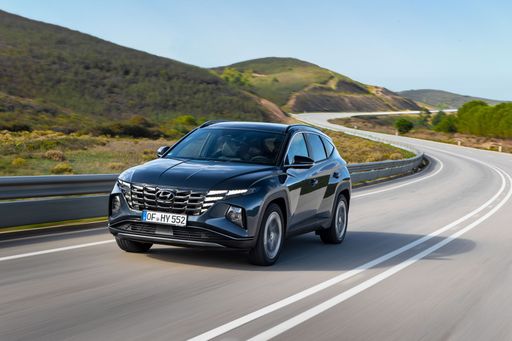 @ Hyundai Motor Company
@ Hyundai Motor Company
Hyundai Tucson
Hyundai Tucson
Hyundai Tucson marries bold, sculpted looks with a clever, roomy cabin that feels smarter than its price tag suggests. It's composed on the road, easy to live with day-to-day, and a sensible choice for buyers who want SUV style without the showroom theatrics.
details @ Hyundai Motor Company
@ Hyundai Motor Company
 @ Hyundai Motor Company
@ Hyundai Motor Company
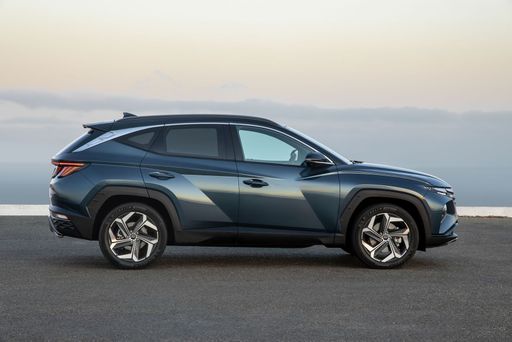 @ Hyundai Motor Company
@ Hyundai Motor Company
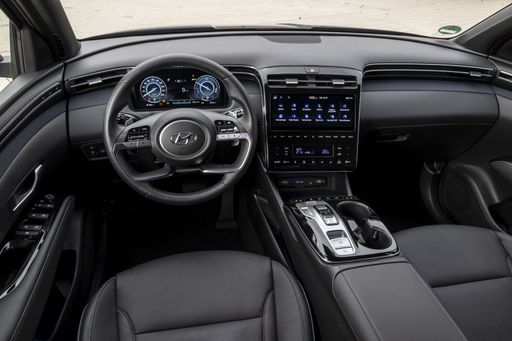 @ Hyundai Motor Company
@ Hyundai Motor Company
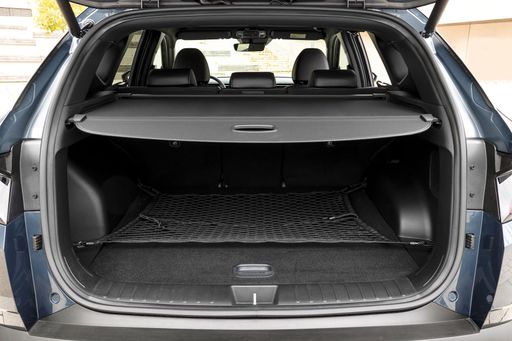 @ Hyundai Motor Company
@ Hyundai Motor Company
Mazda MX-30
The Mazda MX-30 trades conventional EV practicality for a boutique vibe, wrapping easy urban agility and a stylish, artisan interior into a compact package that stands out in the crossover crowd. It’s ideal for city-minded buyers who value design and driving feel over long-distance trips, and its quirky details prove Mazda can be playful without losing its driver-focused soul.
details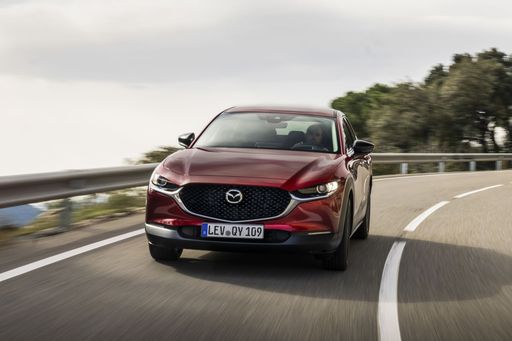 @ Mazda Motor Corporation
@ Mazda Motor Corporation
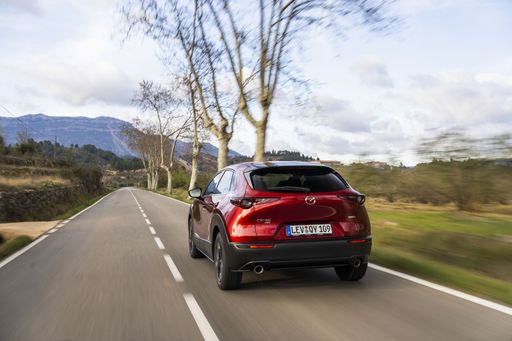 @ Mazda Motor Corporation
@ Mazda Motor Corporation
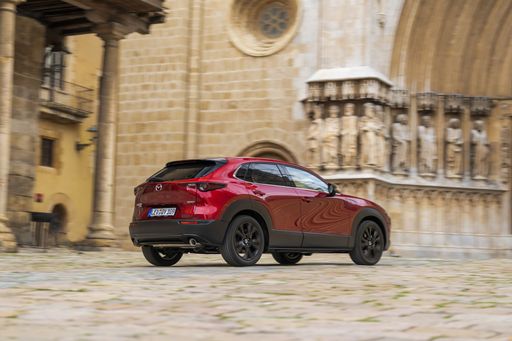 @ Mazda Motor Corporation
@ Mazda Motor Corporation
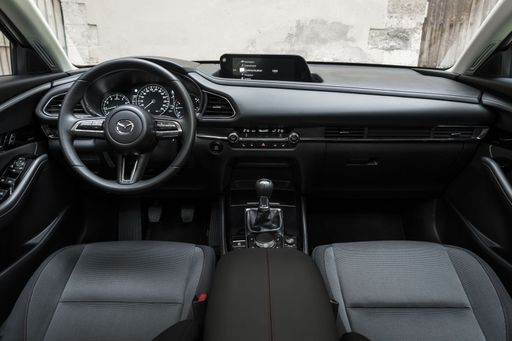 @ Mazda Motor Corporation
@ Mazda Motor Corporation
 @ Hyundai Motor Company
@ Hyundai Motor Company
|
 @ Mazda Motor Corporation
@ Mazda Motor Corporation
|
|
|
|
Costs and Consumption |
|
|---|---|
|
Price
30600 - 46300 £
|
Price
30800 - 37100 £
|
|
Consumption L/100km
1 - 7.6 L
|
Consumption L/100km
-
|
|
Consumption kWh/100km
-
|
Consumption kWh/100km
18.30 kWh
|
|
Electric Range
64 - 70 km
|
Electric Range
85 km
|
|
Battery Capacity
-
|
Battery Capacity
-
|
|
co2
22 - 172 g/km
|
co2
22 g/km
|
|
Fuel tank capacity
42 - 54 L
|
Fuel tank capacity
-
|
Dimensions and Body |
|
|---|---|
|
Body Type
SUV
|
Body Type
SUV
|
|
Seats
5
|
Seats
5
|
|
Doors
5
|
Doors
5
|
|
Curb weight
1542 - 1889 kg
|
Curb weight
1849 kg
|
|
Trunk capacity
546 - 620 L
|
Trunk capacity
332 - 350 L
|
|
Length
4510 - 4535 mm
|
Length
4395 mm
|
|
Width
1865 mm
|
Width
1848 mm
|
|
Height
1650 mm
|
Height
1555 mm
|
|
Max trunk capacity
1721 - 1799 L
|
Max trunk capacity
1137 - 1155 L
|
|
Payload
523 - 545 kg
|
Payload
402 kg
|
Engine and Performance |
|
|---|---|
|
Engine Type
Diesel MHEV, Plugin Hybrid, Petrol, Full Hybrid
|
Engine Type
Plugin Hybrid
|
|
Transmission
Automatic, Manuel
|
Transmission
Automatic
|
|
Transmission Detail
Dual-Clutch Automatic, Automatic Gearbox, Manual Gearbox
|
Transmission Detail
Reduction Gearbox
|
|
Drive Type
Front-Wheel Drive, All-Wheel Drive
|
Drive Type
Front-Wheel Drive
|
|
Power HP
136 - 252 HP
|
Power HP
170 HP
|
|
Acceleration 0-100km/h
7.9 - 11.6 s
|
Acceleration 0-100km/h
9.10 s
|
|
Max Speed
180 - 204 km/h
|
Max Speed
140 km/h
|
|
Torque
250 - 379 Nm
|
Torque
-
|
|
Number of Cylinders
4
|
Number of Cylinders
-
|
|
Power kW
100 - 185 kW
|
Power kW
125 kW
|
|
Engine capacity
1598 cm3
|
Engine capacity
830 cm3
|
General |
|
|---|---|
|
Model Year
2024 - 2025
|
Model Year
2025
|
|
CO2 Efficiency Class
E, B, F, D
|
CO2 Efficiency Class
B
|
|
Brand
Hyundai
|
Brand
Mazda
|
What drive types are available for the Hyundai Tucson?
Available configurations include Front-Wheel Drive or All-Wheel Drive.
The prices and data displayed are estimates based on German list prices and may vary by country. This information is not legally binding.
